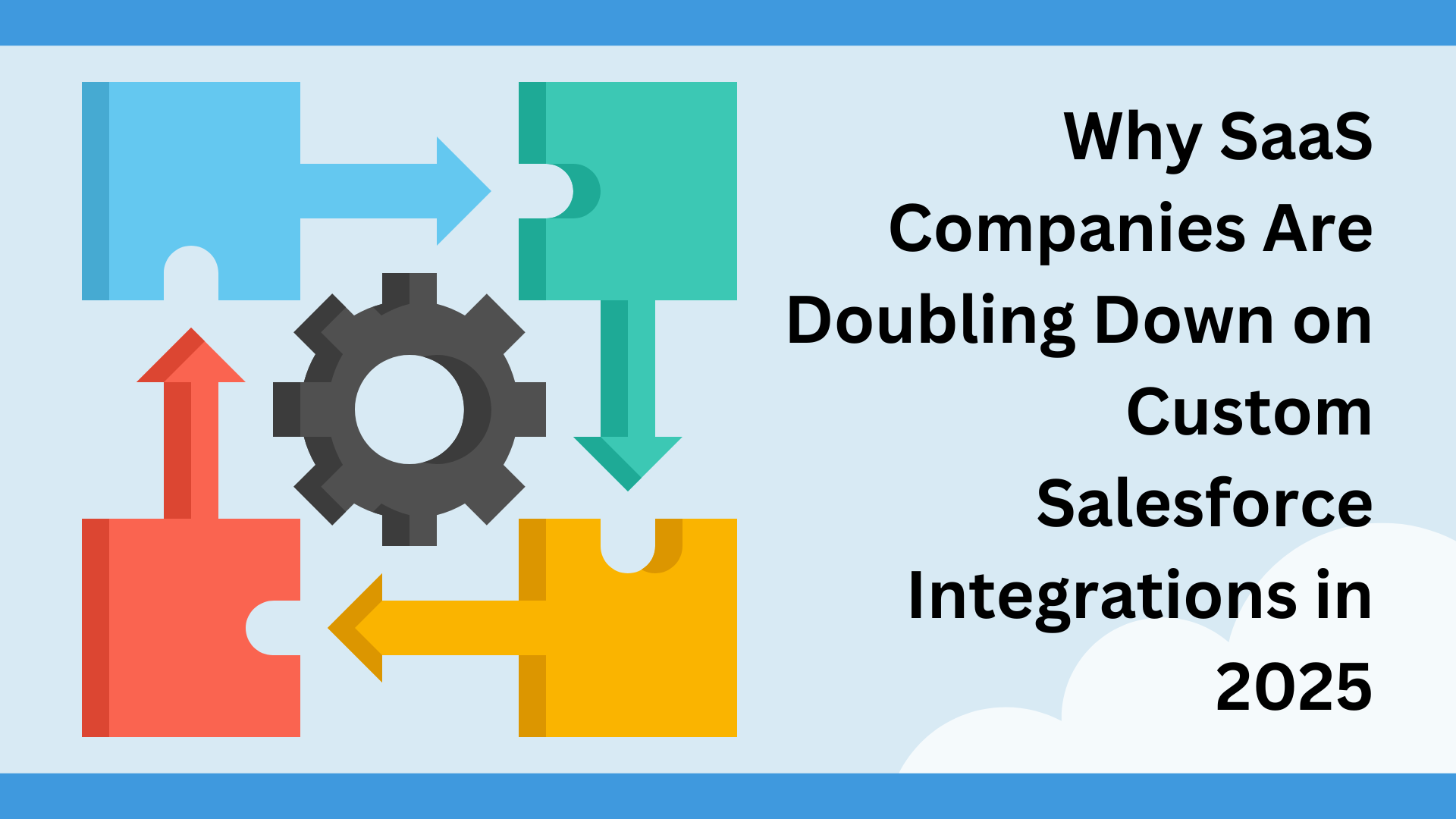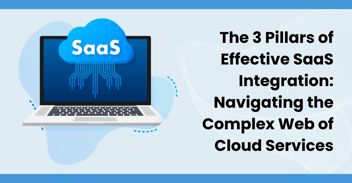The competitive SaaS landscape continues to accelerate as the global market surpasses $390 billion in 2025, growing at nearly 19.4% annually, with projections exceeding $793 billion by 2029. In such a dynamic environment, SaaS providers are under immense pressure to deliver not just standout features, but seamless customer experiences across the ecosystem. At the heart of this transformation: Salesforce integration for SaaS has become a strategic imperative.
1. Surging SaaS Complexity Drives Integration Demand
Organizations now rely on an average of 130+ SaaS apps, and in larger enterprises, that can stretch close to 275—with only 26% of that spend centrally managed (zylo.com). This sprawling landscape creates data silos, inconsistent analytics, and operational inefficiencies. According to a 2025 Salesforce study, 72% of organizations struggle with disconnected data, which hinders CX consistency (addwebsolution.com+7revenuegrid.com+7ascendix.com+7). If data is the bedrock of modern automation and AI, fragmented systems quickly undermine effectiveness.
The solution? SaaS CRM integration with Salesforce establishes a unified "source of truth," linking customer data, product usage, finance, support, and marketing. This isn't a one-off effort—it’s the connective tissue of a data-first growth strategy.
2. Pre-Built Integrations Aren’t Enough
Salesforce AppExchange boasts over 5,000 pre-built apps and connectors (integrio.net). Yet many SaaS platforms are custom-built or must support niche workflows and legacy systems. That’s where Custom Salesforce development becomes mission-critical.
Custom development enables businesses to:
- Integrate proprietary tools, legacy databases, or internal dashboards.
- Automate bespoke workflows, such as license provisioning, usage-based billing, or multi-channel support processes.
- Maintain robust data governance and security by tailoring API interactions to company standards.
Platforms like Concretio confirm: “Salesforce integration can help SaaS firms address data‑related issues and ultimately create a smoother SaaS experience” (getknit.dev+8integrio.net+8linkedin.com+8bizdata360.commedium.com.)
3. Real ROI: Productivity, Forecasting, Revenue
The impact isn’t theoretical—it's measurable. Companies that implement Salesforce integrations often see:
- 29% increase in sales productivity
- 32% boost in forecast accuracy
- Up to 25% revenue gains from better targeting and automation (dianapps.com).
Additional operational wins include:
- 40% reduction in manual data entry via integrated Google Sheets or Excel
- 80% faster contract approvals using DocuSign, thanks to deep Salesforce linkage (dianapps.com)
These metrics reinforce the case for Salesforce integration for SaaS—especially when pre-built options fall short.
4. AI and Real‑Time Insights Require Integrated Data
Salesforce’s Data Cloud sub-business skyrocketed 90% YOY, nearing $400 million, with 25% of enterprise deals including Data Cloud—notably tied to enabling AI readiness (investopedia.com). Salesforce Cofounder Marc Benioff highlighted the importance of unified datasets for powering AI across the Einstein 1 and Agentforce platforms (en.wikipedia.org+2investopedia.com+2reuters.com+2).
SaaS companies embracing SaaS CRM integration gain:
- Real-time syncing across product usage, support tickets, finance, and marketing tools.
- High data fidelity, essential for predictive lead scoring, churn forecasting, and personalized outreach.
- The foundation necessary to layer AI-driven workflows directly into the customer journey.
In other words, integration is now an AI enabler—not just an operational plug.
5. The iPaaS Wave and Embedded Connective Tissue
Integration Platform as a Service (iPaaS) providers like MuleSoft (acquired by Salesforce in 2018) and platforms like Cyclr are evolving into embedded integration layers inside SaaS products (ascendix.com+15cyclr.com+15synebo.io+15bizdata360.com+3cropink.com+3revenuegrid.com+3bizdata360.comen.wikipedia.org). By 2025, iPaaS tools will power native SaaS CRM integration, enabling frictionless data flows that accelerate go-to-market and scale.
The trend:
- SaaS vendors embed connectors during development, not retrofitting them later.
- SaaS + Salesforce = a combined ecosystem where every piece of user interaction feeds into one analytics and engagement engine.
6. Custom Salesforce Development: Strategic Investment
For SaaS companies asking, “Why invest in Custom Salesforce development when AppExchange already covers so much?”—the answer lies in differentiation and ROI.
Custom integrations are justified when:
- You support multi-tenant or usage-based billing workflows unique to your product.
- Onboarding and renewal involve external systems not supported out of the box.
- You aim to provide real-time status dashboards inside Salesforce for customer-facing teams.
- You require higher security or compliance, demanding custom API throttling or encryption rules.
Resources like Integrio highlight these drivers: custom connects tools like ERP, accounting, and proprietary systems—and supports complex bidirectional workflows (integrio.net).
7. Market Dynamics: AI, DevOps, Vertical SaaS
Salesforce’s own 2025 roadmap centers around intelligent automation, API-first architecture, and vertical specialization . For vertical SaaS players, such as healthcare, fintech, or logistics-focused platforms, a tailored SaaS CRM integration with Salesforce accelerates adoption by speaking the customer's language through vertical-ready flows.
Meanwhile, Salesforce tools increasingly support DevOps practices (CI/CD with Salesforce DX), making it easier to manage custom integrations seamlessly through the development lifecycle (linkedin.com).
Bottom Line: Why 2025 Is the Inflection Point
- Growth: SaaS market reaching nearly $400 billion with rising complexity (zylo.com+2cropink.com+2custify.com+2).
- Data: 72% of companies cite disconnected data as a barrier—Salesforce integration fixes that .
- Performance: Productivity +29%, Forecast accuracy +32%, Revenue +25% .
- AI readiness: 90% Data Cloud growth ties to unified data architectures (investopedia.com).
- Dev culture: Salesforce DX, iPaaS, and API-first models support smoother, more maintainable integrations (synebo.io+6linkedin.com+6getknit.dev+6).
For modern SaaS vendors, Salesforce integration for SaaS has evolved from tactical “nice-to-have” to strategic “must-have.” Through Custom Salesforce development, companies not only streamline operations and empower sales teams, but also unlock full AI potential and build defensible differentiation.
In 2025, expect to see SaaS players doubling down on CRM-native experiences: real-time dashboards, embedded workflows, automated billing, and AI-powered insights flowing from the product—all because data is the new competitive currency.





Leave a Comment